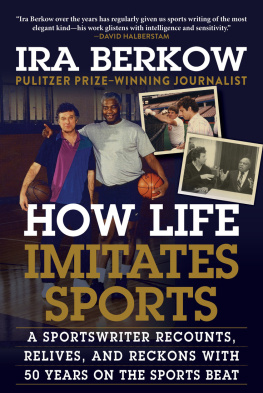Lamb Chris - From Jack Johnson to LeBron James: Sports, Media, and the Color Line
Here you can read online Lamb Chris - From Jack Johnson to LeBron James: Sports, Media, and the Color Line full text of the book (entire story) in english for free. Download pdf and epub, get meaning, cover and reviews about this ebook. year: 2016, publisher: University of Nebraska Press;UNP - Nebraska, genre: Politics. Description of the work, (preface) as well as reviews are available. Best literature library LitArk.com created for fans of good reading and offers a wide selection of genres:
Romance novel
Science fiction
Adventure
Detective
Science
History
Home and family
Prose
Art
Politics
Computer
Non-fiction
Religion
Business
Children
Humor
Choose a favorite category and find really read worthwhile books. Enjoy immersion in the world of imagination, feel the emotions of the characters or learn something new for yourself, make an fascinating discovery.
- Book:From Jack Johnson to LeBron James: Sports, Media, and the Color Line
- Author:
- Publisher:University of Nebraska Press;UNP - Nebraska
- Genre:
- Year:2016
- Rating:4 / 5
- Favourites:Add to favourites
- Your mark:
From Jack Johnson to LeBron James: Sports, Media, and the Color Line: summary, description and annotation
We offer to read an annotation, description, summary or preface (depends on what the author of the book "From Jack Johnson to LeBron James: Sports, Media, and the Color Line" wrote himself). If you haven't found the necessary information about the book — write in the comments, we will try to find it.
The campaign for racial equality in sports has both reflected and affected the campaign for racial equality in the United States. Some of the most significant and publicized stories in this campaign in the twentieth century have happened in sports, including, of course, Jackie Robinson in baseball; Jesse Owens, Tommie Smith, and John Carlos in track; Arthur Ashe in tennis; and Jack Johnson, Joe Louis, and Muhammad Ali in boxing. Long after the full integration of college and professional athletics, race continues to play a major role in sports. Not long ago, sportswriters and sportscasters ignored racial issues. They now contribute to the publics evolving racial attitudes on issues both on and off the field, ranging from integration to self-determination to masculinity.
From Jack Johnson to LeBron James examines the intersection of sports, race, and the media in the twentieth century and beyond. The essays are linked by a number of questions, including: How did the black and white media differ in content and context in their reporting of these stories? How did the media acknowledge race in their stories? Did the media recognize these stories as historically significant? Considering how media coverage has evolved over the years, the essays begin with the racially charged reporting of Jack Johnsons reign as heavyweight champion and carry up to the present, covering the media narratives surrounding the Michael Vick dogfighting case in a supposedly post-racial era and the medias handling of LeBron Jamess announcement to leave Cleveland for Miami.
Lamb Chris: author's other books
Who wrote From Jack Johnson to LeBron James: Sports, Media, and the Color Line? Find out the surname, the name of the author of the book and a list of all author's works by series.










